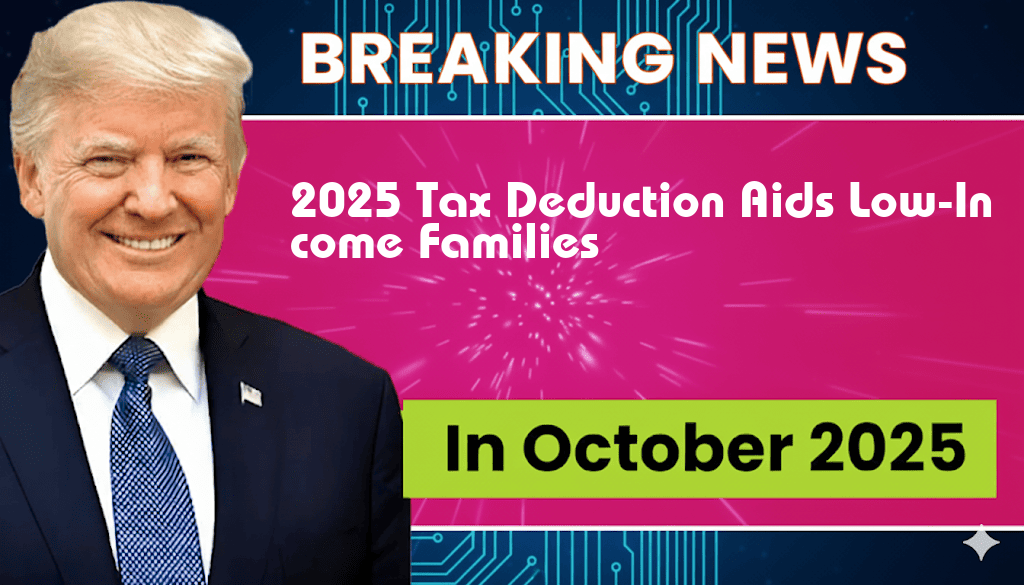A new tax deduction set to take effect in 2025 could provide significant financial relief for low-income families and seniors, potentially saving them an additional $4,000 annually. This initiative, announced by the U.S. Treasury Department, aims to address the growing economic challenges faced by vulnerable populations amid rising costs of living and inflation. The proposed deduction is particularly focused on families earning below the federal poverty level and seniors on fixed incomes. By increasing the standard deduction and offering targeted credits, the government hopes to alleviate some of the financial pressures that these groups face daily. Early projections suggest this could positively impact millions of households nationwide, allowing them to allocate funds towards essential needs such as healthcare, education, and housing.
The Details of the New Tax Deduction
The 2025 tax deduction will introduce a revamped framework designed to assist those most in need. Here’s what taxpayers can expect:
- Increased Standard Deduction: The standard deduction will be raised significantly for low-income families and seniors, providing an immediate tax benefit.
- Targeted Tax Credits: Additional credits will be available for specific expenses, such as child care and medical costs, further enhancing the financial relief.
- Phase-out Mechanism: The deduction will gradually phase out for higher income brackets, ensuring that the benefits are concentrated where they are needed most.
Impact on Low-Income Families
For low-income families, the new deduction could be a game changer. Families struggling to meet basic needs often find themselves squeezed by high housing costs and limited wages. The Forbes report indicates that this change could help alleviate some of the financial burdens, allowing families to invest in their children’s education or save for emergencies.
According to the U.S. Census Bureau, nearly 13% of Americans lived in poverty in 2021, a statistic that has repercussions for health and well-being. The new deduction is expected to lift many families above the poverty line, providing a buffer against the ongoing economic challenges.
Benefits for Seniors
In addition to families, seniors stand to benefit significantly from the 2025 tax deduction. Many older Americans rely on fixed incomes from Social Security and pensions, leaving little room for unexpected expenses. The deduction aims to provide:
- Financial Security: Enhancing disposable income for seniors can help cover rising healthcare costs.
- Increased Quality of Life: With additional funds, seniors may be able to afford better nutrition, medications, and other essential services.
As noted by the Washington Post, many seniors are already feeling the pinch from inflation, making this tax deduction a crucial lifeline during challenging economic times.
Economic Implications
The introduction of this deduction is not just a matter of social welfare; it also has broader economic implications. By putting more money in the hands of low-income families and seniors, the government hopes to stimulate local economies. When families have more disposable income, they are likely to spend it on local goods and services, thus boosting community businesses.
| Group | Estimated Annual Savings | Potential Economic Boost |
|---|---|---|
| Low-Income Families | $4,000 | $30 billion |
| Seniors | $3,500 | $15 billion |
Looking Ahead
As the 2025 tax deadline approaches, advocacy groups are urging lawmakers to ensure that these changes are implemented smoothly and effectively. Organizations such as the National Low Income Housing Coalition and AARP have expressed support for the new deduction, emphasizing the importance of addressing the financial challenges faced by these populations.
Ultimately, the success of the 2025 tax deduction will depend on its acceptance and understanding among those eligible. Educational campaigns will be vital to ensure that families and seniors are aware of their benefits and how to claim them. As the nation prepares for these changes, the hope is that they will lead to a stronger, more equitable economic landscape for all Americans.
Frequently Asked Questions
What is the new 2025 tax deduction for low-income families and seniors?
The new 2025 tax deduction aims to provide financial relief by allowing low-income families and seniors to save an additional $4,000 on their taxes. This initiative is designed to alleviate some of the financial burdens faced by these groups.
Who qualifies for the new tax deduction?
The new tax deduction is primarily targeted at low-income families and seniors. Eligibility will depend on specific income thresholds and other criteria outlined by the IRS in the final regulations.
How can families and seniors apply for the tax deduction?
To apply for the 2025 tax deduction, eligible individuals will need to complete the necessary tax forms during tax season. Detailed instructions will be provided by the IRS to ensure that applicants can easily navigate the process.
When will the tax deduction take effect?
The new tax deduction is set to take effect in 2025, allowing eligible low-income families and seniors to take advantage of the savings during that tax year.
What impact will this deduction have on the financial situation of families and seniors?
The new tax deduction could significantly improve the financial situation for low-income families and seniors by providing them with an additional $4,000 in savings, which can be used for essential expenses like healthcare, housing, and education.

Leave a Reply